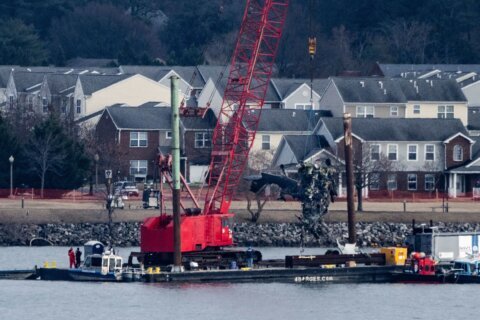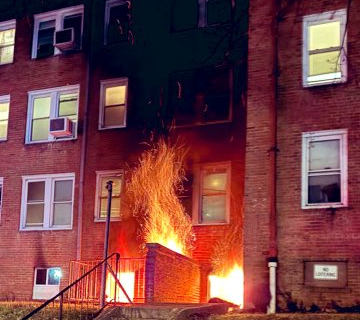D.C.’s Tidal Basin is often associated with the Jefferson Memorial and the cherry blossoms above the water, but underneath the surface are two flood gates that are finally getting funding for repairs.
The purpose of the flood gates is to make sure the water in the man-made reservoir doesn’t become a stagnant pond, according to Kevin Brennan, the chief of navigation for the U.S. Army Corps of Engineers, Baltimore District.
He said that an inlet flood gate underneath the Ohio Drive Bridge takes in fresh water from the Potomac River during high tide, while the outlet gate underneath a different part of Ohio Drive flushes out old water down the Washington Channel during low tide.
But the machinery involved in that process has suffered from wear and tear.
“Some of the tidal gates are working, [but] some of the hinge pins are completely worn out,” Brennan told WTOP. “And some of the roller gates are, well, they haven’t been exercised in a long time, meaning they haven’t been open or closed. They are in a bad state of disrepair.”
While Brennan said that inspections are done every year, he previously hadn’t seen any funding for repairs. That’s why the federal government awarded the Army Corps $400,000 to do a feasibility study and have a team of engineers determine how to fix the gates and what it would cost.
Brennan said visitors to the Tidal Basin should expect to see a barge-mounted crane removing debris around the inlet structure and engineering teams assessing the gates for the next year.
“It’s a situation where we don’t know what we don’t know right now,” Brennan said. “We know that some of [the gates] have broken, we know that some work. But we don’t know the magnitude of the work that’s going to be involved in rehabbing these structures.”
Once the team has a cost in mind to present to Congress, Brennan said the next steps would be finalizing and designing the improvements before any actual construction would begin.
As for why it took so long to address the degrading condition of the flood gates, Brennan said that federal funding on infrastructure has focused on commerce-related projects in recent years, as opposed to smaller ones like the flood gates.
The funding for the feasibility study came from the Infrastructure Investment and Jobs Act and the 2022 Disaster Relief Supplemental Appropriations Act.
Functionality aside, one thing that Brennan hopes to preserve when all is said and done are the gates’ artistic elements.
“They’re really, really interesting structures, and most people don’t even know that they’re there,” Brennan said. “It’s neat that 100 years ago people took pride in it, and I guess funding was there, to make things beautiful, and you don’t typically see that on a lot of things today.”
WTOP’s Mike Murillo contributed to this report.








